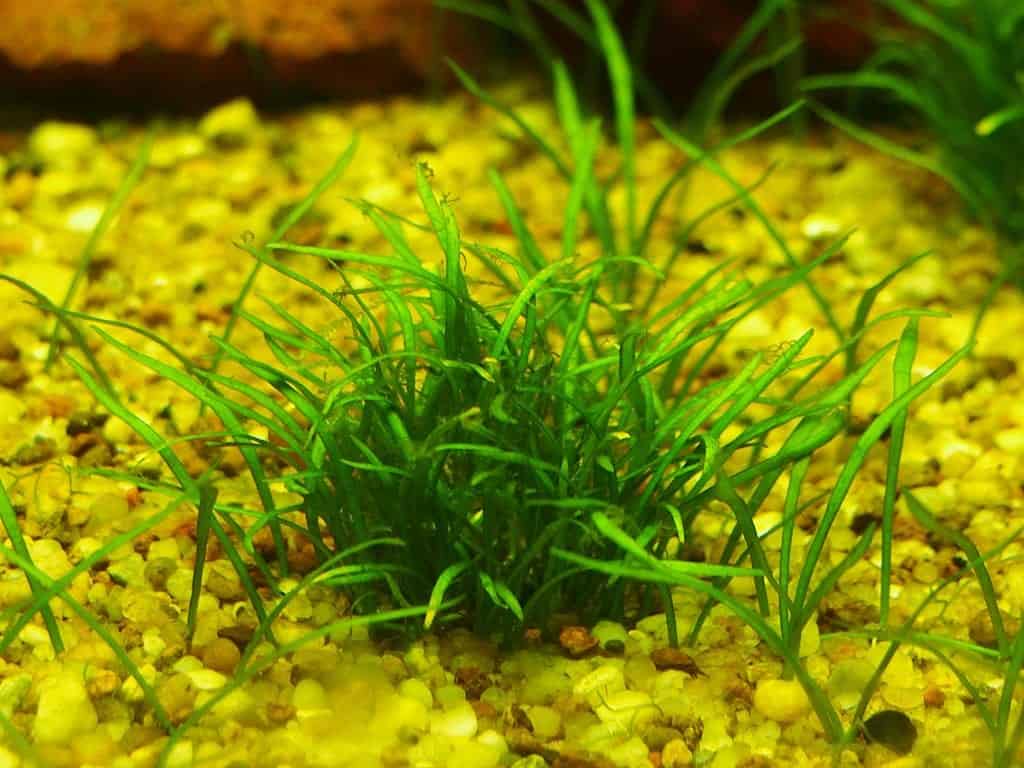The pretty spring green coloration, easy propagation, and all around hardiness of the Pygmy Chain Swordplant make it an excellent species for most any freshwater tank!
Its unique look and adaptability have made the Pygmy Chain Swordplant immensely popular. Being a short plant, It makes a wonderful addition for the front of the aquarium or as a ‘ground cover’. If well cared for it will rapidly reproduce to form a dense 1-2 inch (2.5-5 cm) tall “lawn”.
The Pygmy Chain Swordplant can be easily grown in the average low tech aquarium, but is also a species used frequently by experienced aquascapers. It is featured in many of the famous Takashi Amano works. In his books Nature Aquarium World: Book 1 and Nature Aquarium World: Volume 2 you can see many examples of Takashi’s incredible use of the Pygmy Chain Swordplant to help create beautiful aquatic environments. He includes not only photographs but also parameters for water quality, lighting, substrate, and more for each of his tanks.
To start your own patch, buy a few specimens and space them about an inch or two apart in a well lit part of the aquarium. After a brief settling in period, runners will begin to form and the plant will fill in the gaps. Strong lighting (2-3 WPG is ideal), a nutrient rich substrate, and Co2 fertilization will speed this process along. Like most swords, Pygmy Chain Swordplants require some iron in the water to keep up good growth.
For more Information on keeping a planted aquarium see:
About Planted Aquariums, Adding Aquatic Plants For a Healthy Aquarium
Distribution:
The Pygmy Chain Swordplant is also known as Dwarf Chain Sword, Narrow-leaf Chain Sword, and Micro Sword. It has many regional genetic variants, and its subspecies inhabit waterways in the United States as well as South and Central America.
Water conditions:
Temperature: 75-82° F (24-28° C)
pH: 6.5 – 7.2
dGH: 2-12
Lighting:
Light level: Adaptable, with improved growth at higher levels.
Propagation:
This plant propagates rapidly by producing many runners with daughter plants.
Availability:
The Pygmy Chain Swordplants, also sold as Dwarf Chain Swords, Narrow-Leaf Swords, and Micro Swords are readily available.
Pygmy Chain Sword (Image Credit: Agnieszka Kwiecień, Nova, Wikimedia Commons CC BY-SA 4.0 International)
